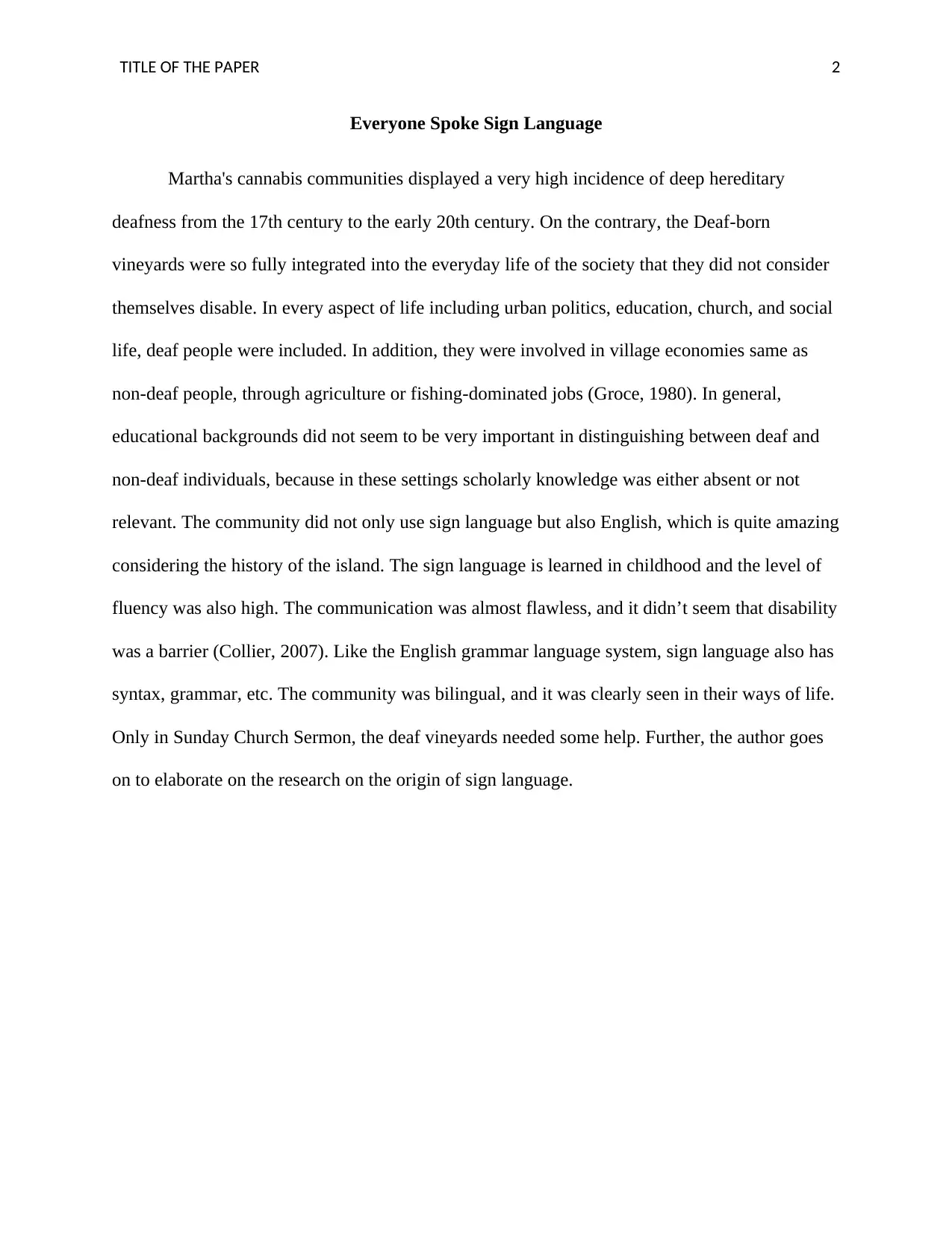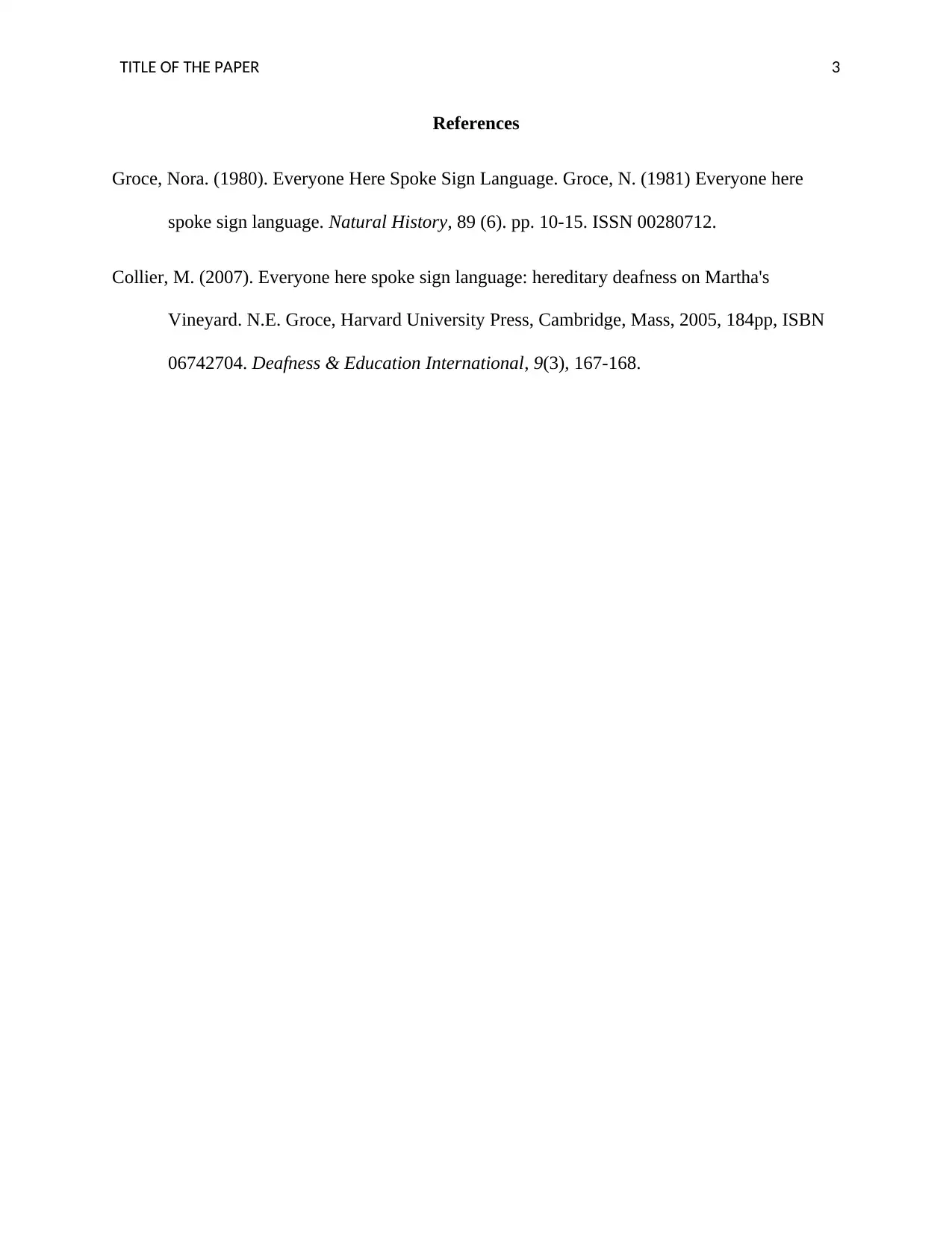Sociocultural Analysis: The Deaf Community of Martha's Vineyard
VerifiedAdded on 2022/08/18
|3
|375
|13
Essay
AI Summary
This essay analyzes the unique deaf community on Martha's Vineyard, focusing on their use of sign language and societal integration from the 17th to the early 20th centuries. The community, with a high incidence of hereditary deafness, was remarkably integrated into daily life, participating in various aspects of society, including urban politics, education, and the economy. Sign language was the primary mode of communication, even though English was also used, highlighting the community's bilingualism. The essay references Groce's (1980) work, emphasizing that the deaf members did not consider themselves disabled, and their fluency in sign language facilitated seamless communication. The study challenges the conventional view of disability by showcasing a society where deafness did not pose a barrier to full participation. The references include Groce (1980, 1981) and Collier (2007), which support the analysis of the community's unique linguistic and social dynamics.
1 out of 3




![[object Object]](/_next/static/media/star-bottom.7253800d.svg)